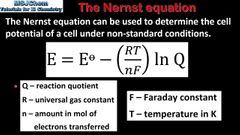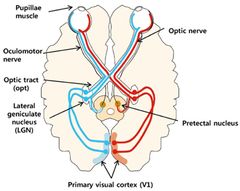![]()
![]()
![]()
Use LEFT and RIGHT arrow keys to navigate between flashcards;
Use UP and DOWN arrow keys to flip the card;
H to show hint;
A reads text to speech;
69 Cards in this Set
- Front
- Back
|
what are the 7 animal classification systems |
kingdom, phylum, class, order, family, genus, species (king philip can't order full grain spaghetti) |
|
|
what are the 3 domain |
bacteria, archaea, eukarya |
|
|
polymorphism: |
gene that has multiple alleles corresponding to different forms of a phenotype |
|
|
speciation: |
formation of a new species |
|
|
factors that lead to speciation (4) |
interbreeding, bottle-neck, specialization, adaptation |
|
|
how does interbreeding lead to speciation |
if species is divided into group and a mutation occurs in 1 group and no the other |
|
|
out-breading: -does it contribute to speciation? why? |
mating on non-relatives; no b/c it maintains genetic flow |
|
|
how does bottle neck contribute to speciation
|
a specie mayface a crisis so severe that there are few survivors, whose allelic frequencies are notrepresentative of the original population. The result is that the allelic frequenciesof the population are shifted |
|
|
specialization: -how does it contribute to speciation |
species tailor to behaviors that allow them to exploit their environment; when species behavior differ vastly from general population speciation is possible |
|
|
adaptation: |
genetic or behavioral changes that give a species an advantage |
|
|
Hardy-Weinberg equilibrium: |
theorizes about a possible species where no evolution occurs
|
|
|
factors of Hardy-Weinberg equilibrium (5) |
1. mutational equilibrium 2. large population 3. random mating 4. immigration and emigration does not change the gene pool 5. no selection for the fittest organism |
|
|
mutational equilibrium: |
rate of forward genetic mutations equals the rate of backward genetic mutations |
|
|
genetic drift: |
1 allele is lost because the animals that have that allele are gone |
|
|
genetic drift can lead to ___ |
bottleneck affect |
|
|
random mating: |
chances for mating are equal regardless of phenotype or genotype |
|
|
differential reproduction: |
animals that have favorable genes of behaviors are more likely to reproduce than animals that don't have these traits |
|
|
lytic infection: |
virus takes over the host cells synthetic machinery. virus RNA is translated into proteins and proteins create a new viruses until the host cell bursts or releases the viruses 1 at a time |
|
|
virulent virus: |
virus in the lytic cycle that is capable of causing disease |
|
|
lysogenic infection: |
viral DNA is incorporated into the host genome. the host does not show any signs of infection and the virus is dormant until "awaken" by stress |
|
|
temperate virus: |
virus in a lysogenic cycle |
|
|
do enveloped or nonenveloped viruses cause cell lysis during the release of duplicated viruses |
nonenveloped |
|
|
colligative property: -ex |
property based on the number of particles not the type of particles; osmosis |
|
|
types of molecules that cam move through the plasma membrane |
small molecules with little to no charge |
|
|
concentration cell: -ex(2) |
differences in concentration initiate movement of charge and thus create a voltage ; Na and K |
|
|
resting membrane potential |
-70 mV |
|
|
explain the electrochemical gradient |
as K+ diffuses across the membrane the chemical gradient starts to equilibrate and diffuse decreases. as the chemical gradient breaks down the electrical gradient increase. diffusion of K+ to the extracellular positive environment and the buildup of negatively charged substances on the internal environment causes the K+ to move back inside. |
|
|
which ion is the major determinant of the membrane potential across the membrane |
K+ |
|
|
the resting membrane potential is determined by ___ |
equilibrium potential of K |
|
|
Nernst equation: n= E* = Q= |

n=number of electrons; standard cell potential, meaningthe voltage that exists when ion concentrations are equal in both parts of the cell; ratio of products over reactants |
|
|
what does the brainstem contain |
medulla, pons, and midbrain |
|
|
medulla function (4-5) |
autonomic functions, have chemoreceptors that recognizes changes of CO2 levels in the blood and adjust and regulate bp by controlled sympathetic and parasympathetic innervation to the heart, respiration, cardiac function, vasodilation, reflexes (coughing, vomiting, sneezing etc) |
|
|
pons function (2) |
communication b/t motor cortex and cerebellum to facilitate motor movement (relay sensory, motor, and autonomic functions from the forebrain to the cerebellum) |
|
|
midbrain function (1) |
relay are of auditory and visual signals, motor movement of the eye, |
|
|
cerebellum function (2) |
planning and coordination of movement, balance |
|
|
what does the diencephalon contain (2)
|
thalamus and hypothalamus |
|
|
thalamus function (1) |
processes almost all sensory info before it reaches higher cortical centers |
|
|
hypothalamus function |
maintain homeostasis in multiple systems such as temp and water balance |
|
|
frontal lobe function: (3) |
planning, impulse control, voluntary movements |
|
|
motor cortex: -location |
creates a map of parts of the body, the amount of motor cortex devoted to each parts depends on the complexity of movements needed; frontal lobe |
|
|
parietal lobe function |
contains the somatosensory cortex which maps the body's sensation to touch |
|
|
somatosensory system: -location |
involves the detection of physical stimuli such as touch, temperature, and pain; parietal lob |
|
|
occipital lobe: |
where visual info is processed |
|
|
temporal lobe: |
process auditory and olfactory info |
|
|
hippocampus and amygdala are important for the function of the ____ system -location -function |
limbic; temporal lobe; memory and emotion |
|
|
how is the brain a top down process |
considering what is most important and thus altering the perception of environmental stimuli |
|
|
the 2 cerebrums are connected by the ____ |
corpus callosum |
|
|
lateralized functons in the brain: ex. (2) |
take place in primarily 1 hemisphere; comprehension of language, emotions |
|
|
5 types of sensory receptors |
mechanoreceptors, thermorerceptors, nocireceptors, electromagnetic receptors, and chemoreceptors |
|
|
what are the receptors of the somatosensory system (3) |
mechanoreceptors, nocireceptors, and thermoreceptors |
|
|
somatosensory system function |
process the sensation of touch, temperature, and pain |
|
|
ex of a mechanoreceptor |
organ of cori hair cells |
|
|
photoreceptors: -how do they work? |
type of electromagnetic receptor that detects the physical stimuli of photons near the eye; the level of light affects how much of the neurotransmitter released |
|
|
chemoreceptors are responsible for the homeostasis of ____ and ___ system |
cardiovascular; respiratory |
|
|
pathway of light entering the eye |
light reflects off of an object in the environment and hits the cornea -> anterior chamber (filled with aqueous humor) -> lens -> light is focused through the vitreous humor and onto the retina where the image is inverted |
|
|
what happens with light hits a rod or cone |
it triggers a hyperpolarization of the membrane of the photorecptor which inhibits the release of neurotransmitters |
|
|
what neurotransmitter do photoreceptors release - is it excitatory or inhibitory |
glutamate; excitatory |
|
|
where does light go after the photoreceptors |
bipolar cells |
|
|
bipolar cells: |
receive signals from their associated photoreceptors (vertical info) and based on the type of glutamate receptor will be inhibited or excited by the change of glutamate released by the photoreceptor |
|
|
where does the light signal go after the bipolar cell -when are the cells bipolar cells act on activated? |
ganglion cells: when bipolar cells experience an overall excitatory effect from both the vertical and horizontal inputs |
|
|
what do the axons of the ganglion cell form? |
the optic nerve |
|
|
pathway of the optic nerve to the occipital lobe |

optic nerve -> lateral geniculate nucleus of the thalamus -> primary visual cortex in the occipital lobe |
|
|
function of the lateral geniculate nucleus of the thalamus |
preserves the visual map created by the ganglion cell and projects the info to the occipital lobe |
|
|
where do the visual stimuli go after the primary visual cortex of the occipital lobe (2) |
to the ventral ("what") pathway -> temporal lobe or dorsal ("where") pathway -> parietal lobe |
|
|
function of dorsal/where pathway -function of ventral/what pathway |
perceiving the location of objects; object recognition |
|
|
pathway of auditory info to the brain |
auditory nerve -> cochlear nuclei (ventral and dorsal) in the medulla ->axons in the cochlear nuclei synapse with neurons w/in the inferior colliculus (some nerves cross over so auditory info from each ear goes to opposite sides of the brain) -> medial geniculate nucleus of the thalamus ->auditory cortex in the temporal lobe |
|
|
smell and taste involve ___ receptors |
chemo |
|
|
all taste sensation are a ____ of all 5 primary taste sensations |
combination |
|
|
pathway of olfactory info |
olfactory nerve -> chemicals bind to the GPCR on the chemoreceptors and cause an action potential -> olfactory bulb ->pyriform cortex in temporal lobe, the amygdala, hippocampus, and hypothalamus -> orbitofrontal cortex |

